I made my first batch of kombucha in 2016, back when I lived in a basement flat in London’s less salubrious East End.
My place was short on storage, so I brewed up a five-litre glass jar in a cupboard next to my bed.
It was an instant hit – with me, anyway. I loved my home-brewed kombucha and its tart, vinegary flavours.
Others in my life were more critical.
My sister, who like me had ventured south from our village in north-east Fife, was living in leafy Surry on account of being older and more successful.
With a callousness that still gnaws when I’m considering what to buy her for Christmas, she refused to even try my kombucha.
“I’m not drinking anything that was made in your bedroom,” she said in a tone that sisters reserve for little brothers.
Well, more fool her, I say!
Because my ventures into kombucha-making really have paid off.
Not in a multi-million-pound business venture kind of way. Though over the past few years many fledging kombucha buffs that started out brewing in their equivalent of my bedroom have gone on to build substantial brands.
No, my own windfall comes from the money I save by making my own kombucha.
How to save money on kombucha
Because, as anyone who has ever bought a can or bottle of the fermented tea will know, kombucha is not cheap.
If it is, you’re probably buying the kombucha-lite that has become a lot more common recently – an ersatz form of the drink that lacks the purported health benefits associated with the drink (more on which later).
The real deal – known in the trade as raw or live kombucha – can easily set you back £3 or £4 for a measly 330ml bottle.
Whereas I am here to tell you that I produce a good four to five litres of raw kombucha – made to my own exacting tastes and under a rainbow of flavours – for about 70p.
Yes, 70p!
Admittedly, you need about a week to make it. And you have to buy some essential tools, including the all-important bacteria and yeast mix (more on that later, too.)
But once set up, making your own kombucha is the easiest thing in the world. What’s more, it’s a rewarding and creative pastime you can wow your friends with.
As long as you are not friends with my sister.
What is kombucha?
Kombucha is more than just a drink.
At its core, it is a brewed green tea fermented for between seven to ten days. Flavours are then added, meaning you can make your kombucha taste like absolutely anything.
My go-to is ginger and lemon, but let the imagination run wild.
So far, so good. But kombucha works on many levels. The fermentation processes, for example, is engineered by something called a scoby – a gelatinous mix of bacteria and yeast.
And if that sounds slightly disgusting, then be warned – it is.
Looking like a nightmarish cross between an alien life form and something you’d find in a Victorian anatomy museum, the scoby further invades your darkest dreams by actually being alive.
As it ferments, the scoby slowly grows a fresh version of itself – terrifyingly called a scoby ‘baby’.
This process is actually very useful, as you can use the baby to make even more kombucha. But the bulbous, rough beast that looks set at any moment to slouch its way out of the jar can really freak people out.
A friend I bequeathed a baby to tossed it out after a week. She couldn’t sleep knowing it was growing inside her house.
Flavour over function – the kombucha health debate
But despite looking like something from a night terror, the scoby is the secret sauce of kombucha. As it ferments, the scoby mix churns out millions and millions of probiotic bacteria that studies appear to show are good for your overall health.
I say ‘appear’ because I’m loath to wade into the whole kombucha health debate. I’ve met many true kombucha believers that preach the good word, claiming the drink solved whatever life-impairing condition they once had.
I am, of course, delighted for them.
But I don’t drink kombucha because it boosts my immune system or makes my skin glow.
And while I’m happy to believe that every sip floods my stomach with ‘good’ bacteria, I drink kombucha because it’s delicious.
And because I enjoy making it.
I hope you do, too.
The office taste test
To help convince you that home-made kombucha is your next hobby, I brewed up some special batches for my colleagues at the Press & Journal. Here’s what they thought.
Julia and Karla
My colleagues on the food and drink team, Julia and Karla know their way around kombucha. But they still thought my version was the best they’d ever had.
Especially when I served it in a champagne flute.
“I really haven’t enjoyed any kombuchas before, but this is really nice,” Karla said.
Both of them liked the lemon-flavoured kombucha I brought in, and remarked upon the mouth-feel that the drink gets through its fermentation.
They asked if its alcoholic, something many people believe because of the fermentation.
Don’t worry. You do get alcoholic kombucha, but it has to go through a second fermentation.
Regular kombucha is no more alcoholic than orange juice. It’s also relatively low in sugar because the scoby eats most of it.
But fermentation is the reason you don’t get many companies making raw, live kombucha.
Made on a large scale, kombucha can eventually become alcoholic. And when it is sitting on a shelf in a can or bottle, a raw kombucha is still fermenting slightly. That can result in exploding bottles.
Big drinks companies that want to make kombucha for the mass market, therefore, will instead make kombucha-flavoured drinks that don’t contain any bacteria, or use a concentrate that has a fraction of the bacteria inside the real stuff.
Craig
City desk reporter Craig Munro spends his days wading through Aberdeen council minutes, so was delighted to take time off for his first kombucha.
I had a surprise in store for Craig – I’d brewed up my very first Haribo-flavoured kombucha with some left over confectionary. I was eager for feedback
Taking a tentative sip, Craig made some very agreeable facial expressions – not unlike Internet meme the kombucha girl.
“Very nice,” he said, before comparing it favourably with an apple and orange caffeinated drink he once had in Sweden called Trocedero.
I had a sip myself. I couldn’t taste the Haribo, but the sweets flattened out the normally tart flavour of my kombucha to make for a lovely beverage that was soft on the palate.
Six years and counting, my kombucha adventure continues.
How to make kombucha
You need:
- A scoby (purchased from an online kombucha store if you can’t get one from a friend. About £10 to have one delivered).
- 14 green tea bags
- 400g of sugar
Method:
- Put the tea bags and sugar in a large heat-proof container and pour boiling water on top. Leave to brew for about 30 minutes then remove the tea bags.
- Leave to cool.
- Put the cool tea mixture into a five-litre glass mason jar. Fill to just over four litres or thereabouts.
- Place the scoby in the jar and put a cotton cloth or muslin cloth over the top.
- Leave in a dark cupboard for 7-10 days.
- Taste the kombucha from day six onwards to get an idea of the taste. On later batches, you will start to know what flavour you like.
- Sometime before the 10-day mark, decant the kombucha into one-litre flip-top bottles. Flavour with anything. I recommend ginger to start with.
- Close the bottles and store in a cupboard for two more days.
- Place in the fridge and drink when cold. You can strain any scoby remains out using a sieve.
- Enjoy your first kombucha!

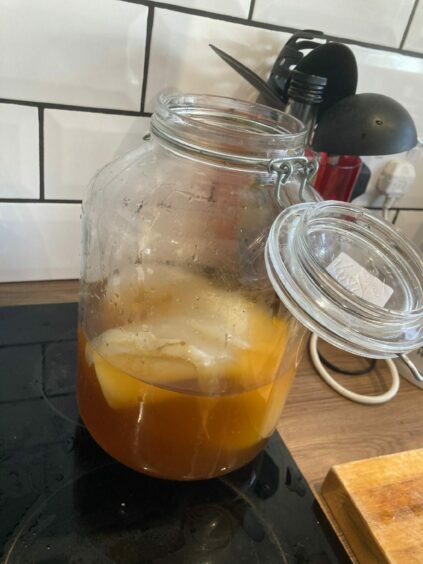
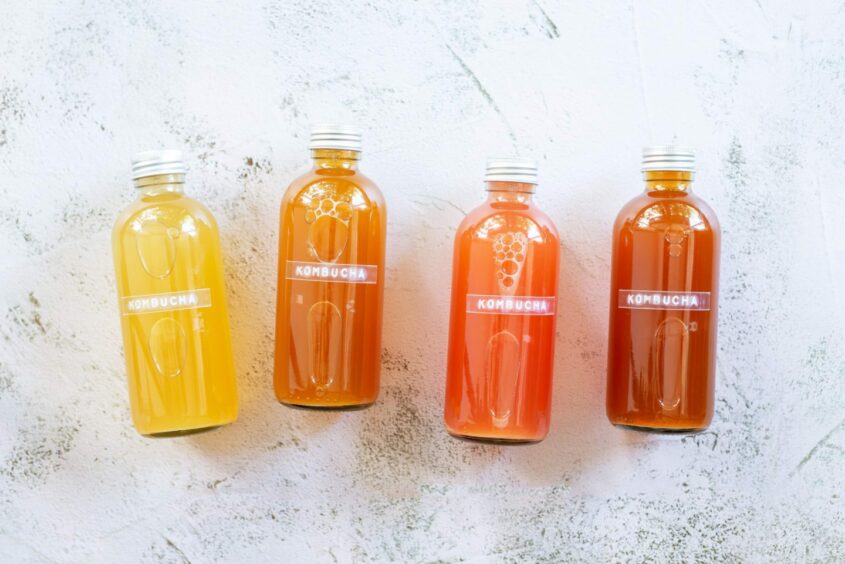
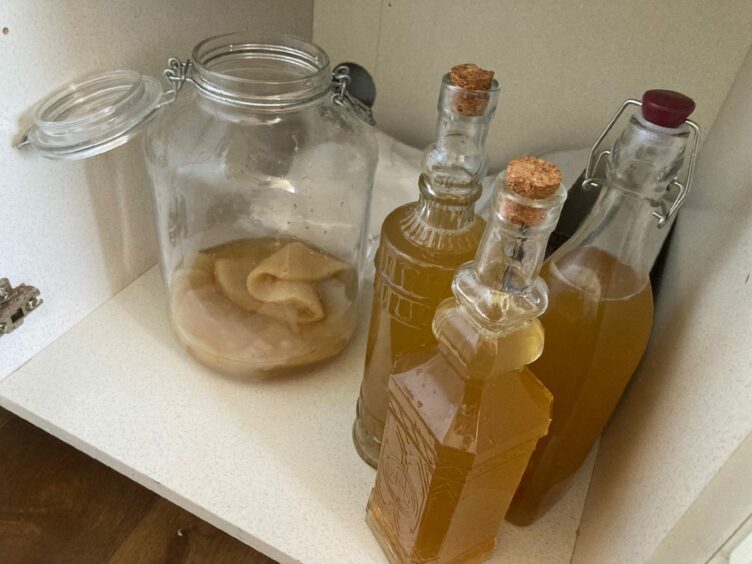
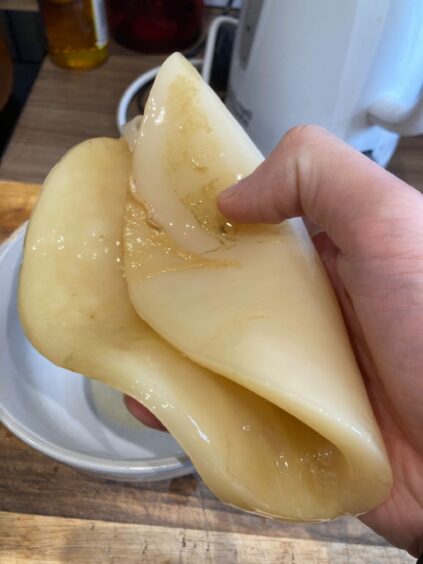
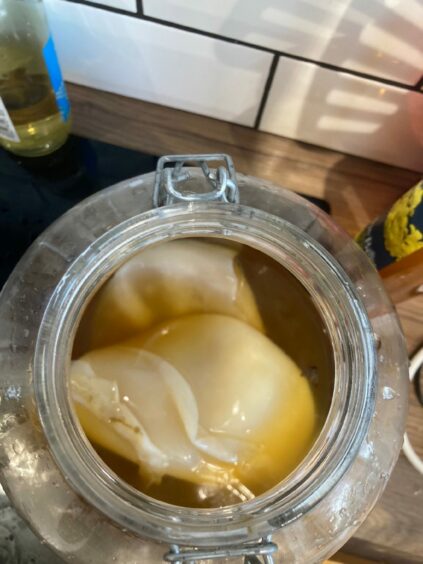



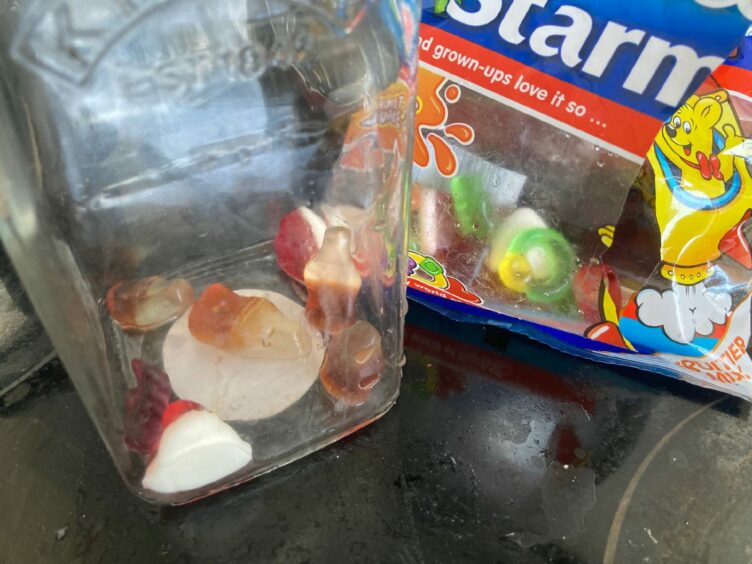
Conversation